The nearly decade-long investigation of Subash Kapoor in India and the U.S. continues to make headlines in both nations. Inevitably, Kapoor is presented in the press as a rare catch from a network of international antiquities smugglers. Yet he remains the lone example of this supposedly elite breed. Once an eager self-promoter, Kapoor has now spent seven years in a steamy south Indian jail in Tamil Nadu state, slapped around by a fellow prisoner for wasting water at the faucet in the prison yard[1] and eating a cup of rice and a few pieces of fish every day.[2]
In July 2019, the Manhattan District Attorney finally indicted Subhash Kapoor.[3] The criminal case also lists seven alleged co-conspirators, who range from trusted Kapoor family members said to have hidden away the most valuable missing objects to a professional conservator in England who did restoration for Kapoor’s gallery among hundreds of other clients.

Court Van used to shift prisoners from jail to court and back, photo by Hpsatapathy, 7 June 2016, Creative Commons Attribution-Share Alike 4.0 International license.
When and if Kapoor has a full court hearing in the U.S., we may learn the facts about his business dealings in India and among his global clientele. At that time, the New York prosecutor may justify the extraordinary value of over $140 million dollars placed on the many pathetic (and often fake) objects seized from Kapoor’s storage units and the unprecedented attempts to extradite service providers to his gallery may be explained.
As background to the Kapoor case, it may be useful to examine some of India’s most notorious cases of illicit antiquities trading. Manhattan District Attorney Cyrus Vance has said that, “These are, in many instances, priceless works that represent the culture and history of the countries from which they were stolen.”[4] However, India’s past anti-smuggling prosecutions have been characterized by inaction in the courts and reversals of convictions. Outside of the extremely common, opportunistic thefts from temples, dozens of which are registered by Indian police every year, there are only a few cases to illuminate the legal and not-so-legal processes that have brought Indian antiquities to the West and allowed most of them to remain there.
Despite longstanding laws prohibiting export, hundreds of thousands of antique and ancient objects have been sold by India dealers and shipped to Australia, Southeast Asia, Japan, Europe, the US and the UK. It is true that over the years, Indian police and customs authorities have seized thousands of Indian antiques, manuscripts, and antiquities from unauthorized international air and sea shipments and from tourists unaware of prohibitions on export. But many more objects have been exported by Indian collectors and licensed Indian antique dealers through various means: issuance of legitimate export licenses by the Central Government, quasi-legal permits dispensed to authorized antiquities dealers with a nod and wink from Indian government agencies, and through a variety of illegal export practices in which a ‘fine’ was paid as an alternative to seizure.
In the nineteenth and early twentieth centuries, antiquities were often exported in disregard of colonial period laws or through payment on export of a fine, as was possible under the Indian Treasure Trove Act, 1878 and Ancient Monuments Preservation Act of 1904. The Antiquities Export Control Act 1947[5] was passed after independence, but it only reduced the number of objects that left India; registered art dealers continued to ship virtually anything out of the country.
Only after passage of the 1947 Act was an individual Customs officer no longer allowed the discretion to impose a fine in lieu of seizure or confiscation. After 1947, officially, this option could only be legally exercised by Central Government authorities.
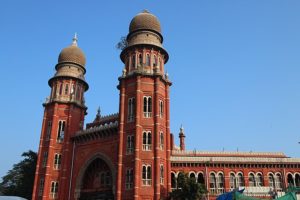
Madras High Court, Chennai, exposed brick building of Indosarcenic Architecture and Colonial Architecture movement, photo by Kalyan07kumar, 24 December 2018, Creative Commons Attribution-Share Alike 4.0 International license.
While sculptures and ‘icons’ were often concealed in shipments of handicrafts through the 1980s, this was a thin camouflage, and many objects were exported with an appropriate douceur. Until the early 2000s, customs permits could be obtained for the export of decorative works such as manuscripts and miniatures, and antique architectural wood and marble flowed out of India to be sold in dozens of galleries and antique shops in England, Australia, and the U.S.
The Indian government has rarely sought the return of exported objects. The Indian government made its first claim against a foreign held object in the highly publicized case of the Norton Simon Sivapuram Nataraja in the 1970s. However, it was not until there was wide foreign publicity about the wholesale export of important antiquities by Indian dealer Vaman Narayan Ghiya in the 1990s that there was a major Indian police investigation of a smuggling case.
Below, we discuss the cases of the Norton Simon Sivapuram Nataraja, the surprising reversal of the conviction of notorious ‘idol thief’ Vaman Naryan Ghiya, and Canada’s repatriation of a Parrot Lady sculpture that may have been from the Khajuraho temple. These three well-known cases illustrate the equivocal attitude of the Government of India toward the prosecution of Indian nationals with money and influence – and its limited commitment to the preservation of Indian sites and artifacts. They demonstrate that criminal cases that generate headlines and moral indignation in the U.S. and Europe, sell books, and make prosecutorial careers, have significantly less importance in the eyes of the Indian government.
The Norton Simon Sivapuram Nataraja: a return garners a year of prosecution-free purchases of India art
In 1951, a very large and beautiful bronze sculpture of Siva as Lord of the Dance, Sivapuram Nataraja, was found together with five other bronzes in a farmer’s field in Thanjavur district, Tamil Nadu state, in southern India. Although considered government property under India’s Treasure Act, the statue was placed in custody of the nearby Sivagurunathaswamy temple.[6] Five years later, several individuals conspired to send the statues to an Indian restorer, who made copies that were returned to the temple, while the originals were sold. The authentic Sivapuram Nataraja went first to collector Lance Dane in Bombay,[7] and then passed into the well-known Indian private collection of Boman Behram in Bangalore.[8] In 1969, Behram sold the statue to NY art dealer and collector Ben Heller (best known as a champion of American Abstract Expressionism). Heller sold the Nataraja to California businessman and philanthropist Norton Simon in 1972 for $900,000.
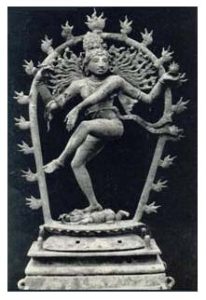
The Norton Simon Foundation’s Sivapuram Nataraja
Meanwhile, in 1965, British Museum curator Douglas Eric Barrett had visited the Sivagurunathaswamy temple and announced to museum and academic colleagues that the sculptures stored there were fake. Although the Sivapuram Nataraja sculpture was generally known to be in the Norton Simon Foundation collection, it was only as a result of publicity surrounding New York’s Metropolitan Museum’s plans to exhibit the Foundation’s Indian art collection in 1973, that Indian authorities became aware that the Nataraja was now in the U.S.
India claimed that it had rights to the sculpture and asked for its restitution, at the same time filing civil lawsuits against the Norton Simon Foundation and Ben Heller in California and in New York.[9] As the statue had been shipped to the British Museum in London for restoration, India succeeded in getting Scotland Yard to impound the statue there. The Indian government asserted in its suit that Heller and the Foundation had purchased and imported the sculpture knowing that this violated Indian law and that the export had been carried out by means of false statements on the export permit. India also raised an unprecedented argument that the statue was not “property” but had divine, godlike properties that made it a legal entity able to sue on its own behalf; India also alleged that the Foundation had caused mental suffering to the people of India over its loss. The Foundation countered, arguing that the statue had been legally imported into the U.S. and that the Indian government had abandoned its interest, having been able to discover the statue’s whereabouts for years and taking no steps to recover it while it was displayed notoriously as part of the Boman Behram collection.
The case did not come to trial, but was resolved through negotiation by the parties, who reached an out of court settlement. The Foundation agreed to recognize India’s ownership and return the statue to India. India agreed to allow the statue to be displayed in the newly opened Norton Simon Museum in Pasadena, California for ten years, and gave the Norton Simon Foundation carte blanche to purchase any Indian antiquity already outside of India with complete immunity from suit for a period of one year. Ben Heller agreed to give a number of artworks and pay an unspecified amount of money to the Foundation.
The Complete Acquittal of Vaman Narayan Ghiya
Indian art dealer Vaman Narayan Ghiya is reported to have been the most prolific smuggler of Indian antiquities.[10] According to police cases filed against Ghiya in his home state of Rajasthan, he illicitly traded in antique sculptures for thirty years before finally being investigated and arrested in June 2003.[11] Prosecutors contended that two gangs of thieves, known as the Mathura Gang and the Agardi Gang after the villages where they originated, stole antique sculptures from various sites and temples. They showed photographs of the stolen items to Ghiya, who purchased and illegally shipped them from India to auction houses and other clients in Europe and the UK.
Prosecutors alleged that for many years, Ghiya operated a large handicrafts store in Jaipur, India to provide cover for his exports. As early as 1968, the Customs Bureau of India (CBI) seized twenty-one antique objects in a shipment of Ghiya’s handicrafts in Mumbai. Ghiya was prosecuted but acquitted by the court. Then, during the 1980s, Ghiya became known as the preeminent buyer of ancient stone and bronze temple sculptures. Enterprising groups of thieves would send him photographs of stolen objects, which he would arrange to have shipped to godowns in Mathura and Delhi. Often, Ghiya never saw the sculptures and other artworks before they were shipped out of India. Ghiya set up two companies at the Geneva freeport in Switzerland to sell artworks to each other, providing an ostensible Swiss provenance for them. He worked to develop an extensive clientele in Europe and the UK. Still, Ghiya operated with impunity in India.
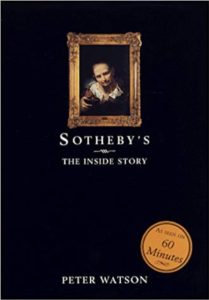
Sotheby’s: The Inside Story, by Peter Watson, Random House; 1st U.S. ed edition (1997)
Ghiya’s extensive antiquities trading network received international attention after publication in 1997 of British journalist Peter Watson’s book, Sotheby’s: The Inside Story.[12] In it, Watson recounted accusations by a former Sotheby’s employee named James Hodges, that Ghiya had flooded Sotheby’s with dozens of highly important ancient stone and bronze gods and goddesses from neglected Indian temple sites in the early 1980s and that Hodges had routed substantial funds to secret accounts in Ghiya’s name. (In 1988, Ghiya successfully refused to release bank account numbers during a tax investigation in India.) Although Watson’s book garnered wide attention in the UK, the extensive trade in ancient Indian sculptures that it revealed does not appear to have come to Indian authorities’ notice until a police investigation into Ghiya’s activities in India was already underway.
According to interviews with Anand Shrivastava, Superintendent of Police in Jaipur, in Patrick Radden Keefe’s article, ‘The idol thief’, which appeared in The New Yorker on April 30, 2007, India’s Central Bureau of Investigation (the national police authority) had long suspected Ghiya was smuggling art, but officials lacked evidence to build a case against him. In 2002, Shrivastava led a year-long investigation of Ghiya in Jaipur that he named ‘Operation Black Hole.’ He and a team of 12 police officers began pulling in and interrogating thieves involved in a rash of thefts of relatively recent statues of low quality taken from temples. Shrivastava said that a number of thieves confessed that they hoped to sell the stolen works to Ghiya. Shrivastava also attempted to track down prior thefts from temples and shrines, a task made particularly difficult because the Archaeological Survey of India had not compiled documentation or inventory of Indian temples and sites.
Shrivastava then obtained a copy of Peter Watson’s book describing the frequent transactions between Ghiya and Sotheby’s. He used old archaeological studies and images from catalogs and books in the West to try to link photographs to missing statues. Based on this information, Jaipur police searched Ghiya’s home in a dawn raid on June 7, 2003.
They found no antiquities but did discover hundreds of photographs of stone figures of Indian Hindu deities, Jain Tirthankaras, and Chola bronzes. They also found 68 catalogs from Sotheby’s and Christies. (In statements to police during his confinement, Ghiya later identified nearly 700 objects in the catalogs as smuggled by him into Geneva. However, statements made under interrogation in India are usually assumed to have been obtained under pressure and are not admissible in court.) After Ghiya’s arrest, police searched his farm and a half dozen urban storage spaces and warehouses. Altogether, they found about 900 objects.
A lengthy investigation and trial followed, throughout which Ghiya was held in prison. In a judgment issued on November 20, 2008 in the Additional Sessions Court in Jaipur[13], Vaman Narain Ghiya and an associate, Banne Singh, were convicted of dishonestly receiving stolen property [14] and habitually dealing in stolen property [15] and for offences under the Antiquities and Art Treasures Act. They were acquitted of violations of laws against theft[16], criminal conspiracy[17], of some instances of habitually dealing in stolen property[18], and of assisting in concealment of stolen property[19], conspiracy of the same, for belonging to a gang of thieves[20] and for selling antiquities without a license.[21]
In a very unusual move by the prosecution, the government challenged the acquittals. Nonetheless, on January 15, 2014, the High Court of Judicature for Rajasthan at Jaipur Bench, Jaipur denied the government’s request for the acquittals to be reversed.[22] In a separate judgement issued the same day in Vaman Narain Ghiya vs. State of Rajasthan, the High Court of Judicature for Rajasthan overturned Ghiya’s remaining earlier convictions for dishonestly receiving stolen property[23] and habitually dealing in stolen property.[24] The court found that the government failed to prove the gangs alleged to have supplied antiquities were formed for the purpose of committing theft or robbery, and that the sculptures, manuscripts and other artifacts seized were either stolen property or antique. It stated that the prosecution witnesses’ testimony had been “shattered” in cross examination; that the prosecution provided no expert testimony that the artifacts recovered were from the stated sites; that an investigating officer demanded “an illegal gratification” from Ghiya which was refused, and the same investigator and other officers never sealed the seized items or met mandatory standards of safe custody of evidence. Much of the evidence produced by the prosecution was held to be either inadmissible for lack of proper documentation or to be hearsay.
Despite the acquittals, the High Court did not rule that the seized artifacts be returned to Ghiya. Instead, it was tentatively announced that a Ghiya Collection of South Asian Art would be stored and eventually displayed at Jaipur’s Palace of Winds, the Hawa Mahal. However, the Palace of Winds lacks burglar alarms and other security measures sufficient for the exhibition of such valuable artifacts, so they have remained in storage.[25]
Canada Returns ‘Parrot Lady’ Sculpture to India: was it real?
A statue of apparently Indian origin was seized in Canada soon after its import. The Department of Canadian Heritage took the initiative to notify the Indian High Commission in Ottawa in 2011. Three years later, the Indian High Commission responded that the statue was from the twelfth century Khajuraho temple site in the Vindhya mountain range in central India, a World Monument site. The Indian government requested its return.
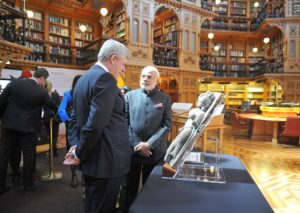
The Prime Minister, Shri Narendra Modi at the presentation of the Parrot Lady statue, in the library of Canadian Parliament with the Prime Minister of Canada, Mr. Stephen Harper, in Ottawa, Canada on April 15, 2015. Licensed under the Government Open Data License – India (GODL)
There was still a hurdle to be passed to enable repatriation to India. Canada is a signatory to the 1970 UNESCO Convention on the Means of Prohibiting and Preventing the Illicit Import, Export and Transfer of Ownership of Cultural Property, and has passed the Canadian Cultural Property Export and Import Act[26] (CPEIA), making import of cultural property illegally exported from a State that is also signatory to the convention illegal under Canadian law.[27]
Under Canadian law, however, a government requesting restitution must provide documentation that the property was illegally exported from that state. India had been unaware that the statue was missing and was unable to supply either its exact former location or proof that the statue had been illegally exported.[28] In 2014, Canadian news media reported that a photograph was being circulated through the Archaeological Survey of India to find proof of the theft.
In a bizarre twist, a Canadian newspaper later tracked down the importer, a retiree in Alberta who bought the stone statue on eBay for $3,818.59 as a replica to decorate her home, and who is still convinced that the statue is a recent copy. “It could be that somebody in a knock-off shop is laughing,” she told the National Post. Experts who examined the statue thought it likely to be real.[29]
However, despite the failure to identify from where the statue was stolen, Canadian officials eventually accepted that the object came from a Khajuraho temple based upon it being a familiar and common type and style. Canadian Prime Minister Stephen Harper presented the statue to Prime Minister Narendra Modi of India during a state visit to Ottawa in April 2015.[30]
The Kapoor case, when it is finally heard, is likely to provide additional insights into the operation of India’s antiquities investigations. It is also likely to invite comparisons between U.S. and Indian prosecutions (or the lack thereof) and the role of the U.S. and other art-consuming nations in acting as the world’s art policemen, when an art source country appears indifferent.
[1] Art smuggler Subhash Kapoor slapped in prison, Times of India, March 14, 2018, https://timesofindia.indiatimes.com/city/trichy/art-smuggler-subhash-kapoor-slapped-in-prison/articleshow/63309893.cms
[2] Lakshmi Subramanian, Illegal trade of art and artifacts, The Week, April 3, 2016, https://www.theweek.in/content/week/magazine/theweek.2016.04.03.html
[3] Sarah Cascone, New York Files Charges Against Disgraced art Dealer Subhash Kapoor in $145 Million Smuggling Ring, Artnet News, July 11, 2019, https://news.artnet.com/art-world/new-york-files-charges-145-million-art-smuggling-ring-1598293
[4] Jim Mustian, Art Ring charged with smuggling $143 million in antiquities, Associated Press News, July 10, 2019, https://www.apnews.com/6972077b91654f79b6fb7449c215d580
[5] Antiquities Export Control Act, 1947 (Act No. XXXI of 1947) and Rules pertaining to the Act.
[6] Although the Treasure Trove Act (VI of 1878) vested rights of possession in the government, India’s Ancient Monuments Preservation Act (Act No. VII of 1904) can defer rights to possession of religious artefacts to persons for purposes of worship and prohibit export.
[7] Govt. of Tamil Nadu, Economic Offenses Wing, Idol Wing Judgments, http://www.tneow.gov.in/IDOL/judgement.html
[8] The career of Boman Behram, one of the great Indian private collectors of ancient art, is described by Dr. Pratapaditya Pal in In Pursuit of the Past – Collecting Old Art in Modern India, circa 1875-1950. Another outstanding Indian sculpture possibly from this collection, a Gupta period bronze Buddha, is pictured on the book’s cover, and is now in the collection of the Asia Society museum in New York, the 1979 gift of Mr. and Mrs. John D. Rockefeller. Pratapaditya Pal, In Pursuit of the Past. Collecting Old Art in Modern India, circa 1875-1950, Bombay, Marg, 2015.
[9] Union of India v. the Norton Simon Foundation, United States District, Southern District of New York, 74 Cir. 5331 (SDNY 1976); United States District Court, Central District California, Case No. CV 74-3581-RJK (CD Cal. 1976)
[10] Patrick Radden Keefe, ‘The idol thief’, New Yorker, April 30, 2007, https://www.newyorker.com/magazine/2007/05/07/the-idol-thief
[11] Id.
[12] Peter Watson, Sotheby’s: The Inside Story, London: Bloomsbury, 1997.
[13] Sessions Case No..76/2006(141/2003) Of The Additional Sessions Judge (Fast Track) NO.1, Jaipur City, Jaipur.
[14] Indian Penal Code. 411. Dishonestly receiving stolen property.—Whoever dishonestly receives or retains any stolen property, knowing or having reason to believe the same to be stolen property, shall be punished with imprisonment of either description for a term which may extend to three years, or with fine, or with both.
[15] Indian Penal Code. 413. Habitually dealing in stolen property.—Whoever habitually receives or deals in property which he knows or has reason to believe to be stolen property, shall be punished with 1[imprisonment for life], or with imprisonment of either description for a term which may extend to ten years, and shall also be liable to fine.
[16] IPC 379. Punishment for theft.—Whoever commits theft shall be punished with imprisonment of either description for a term which may extend to three years, or with fine, or with both.
[17] IPC 120B. Punishment of criminal conspiracy.—
(1) Whoever is a party to a criminal conspiracy to commit an offence punishable with death, 2[imprisonment for life] or rigorous imprisonment for a term of two years or upwards, shall, where no express provision is made in this Code for the punishment of such a conspiracy, be punished in the same manner as if he had abetted such offence.
(2) Whoever is a party to a criminal conspiracy other than a criminal conspiracy to commit an offence punishable as aforesaid shall be punished with imprisonment of either description for a term not exceeding six months, or with fine or with both
[18] IPC 413. Habitually dealing in stolen property.—Whoever habitually receives or deals in property which he knows or has reason to believe to be stolen property, shall be punished with 1[imprisonment for life], or with imprisonment of either description for a term which may extend to ten years, and shall also be liable to fine.
[19] IPC 414. Assisting in concealment of stolen property.—Whoever voluntarily assists in concealing or disposing of or making away with property which he knows or has reason to believe to be stolen property, shall be punished with imprisonment of either description for a term which may extend to three years, or with fine, or with both.
[20] IPC 401. Punishment for belonging to gang of thieves.—Whoever, at any time after the passing of this Act, shall belong to any wandering or other gang of persons associated for the purpose of habitually committing theft or robbery, and not being a gang of thugs or dacoits, shall be punished with rigorous imprisonment for a term which may extend to seven years, and shall also be liable to fine.
[21] Antique & Art Treasure Act, 1972, 5/25(2), http://www.tneow.gov.in/IDOL/ACT.html.
[22] DB Criminal Appeal No.809/2012, Against The Judgment Dated 20.11.2008 Passed By The Additional Sessions Judge (Fast Track) No.1, Jaipur City, Jaipur IN Sessions Case No..76/2006(141/2003), Judgment January 15, 2014, paragraph 12, https://indiankanoon.org/doc/152498913/
[23] IPC. 411. Dishonestly receiving stolen property.—Whoever dishonestly receives or retains any stolen property, knowing or having reason to believe the same to be stolen property, shall be punished with imprisonment of either description for a term which may extend to three years, or with fine, or with both.
[24] IPC. 413. Habitually dealing in stolen property.—Whoever habitually receives or deals in property which he knows or has reason to believe to be stolen property, shall be punished with 1[imprisonment for life], or with imprisonment of either description for a term which may extend to ten years, and shall also be liable to fine.
[25] Patrick Radden Keefe, ‘The idol thief’, New Yorker, April 30, 2007, https://www.newyorker.com/magazine/2007/05/07/the-idol-thief
[26] Cultural Property Export and Import Act, R.S.C., ch. C-51 (1985) (Can.)
[27] Arthemis, Art-Law Centre University of Geneva, https://plone.unige.ch/art-adr/cases-affaires/parrot-lady-sculpture-2013-canada-and-india/case-note-2013-parrot-lady-sculpture-2013-canada-and-india/view
[28] Douglas Quan, Canada balks at returning statue believed stolen from world heritage site in India, Canada.com, August 3, 2014, https://o.canada.com/news/national/canada-balks-at-returning-statue-believed-stolen-from-world-heritage-site-in-india
[29] Douglas Quan, Woman who found 900-year-old ‘Parrot Lady’ statue Canada presented to India still convinced it’s just a ‘nice knock-off’, National Post, November 27, 2015, https://nationalpost.com/news/canada/woman-who-found-900-year-old-parrot-lady-statue-canada-presented-to-india-still-convinced-its-just-a-nice-knock-off
[30] Stephen Harper returns 900-yearpold Khajuraho temple sculpture to Modi, Times of India, April 15, 2015, https://timesofindia.indiatimes.com/india/Stephen-Harper-returns-900-year-old-Khajuraho-temple-sculpture-to-Modi/articleshow/46941237.cms.
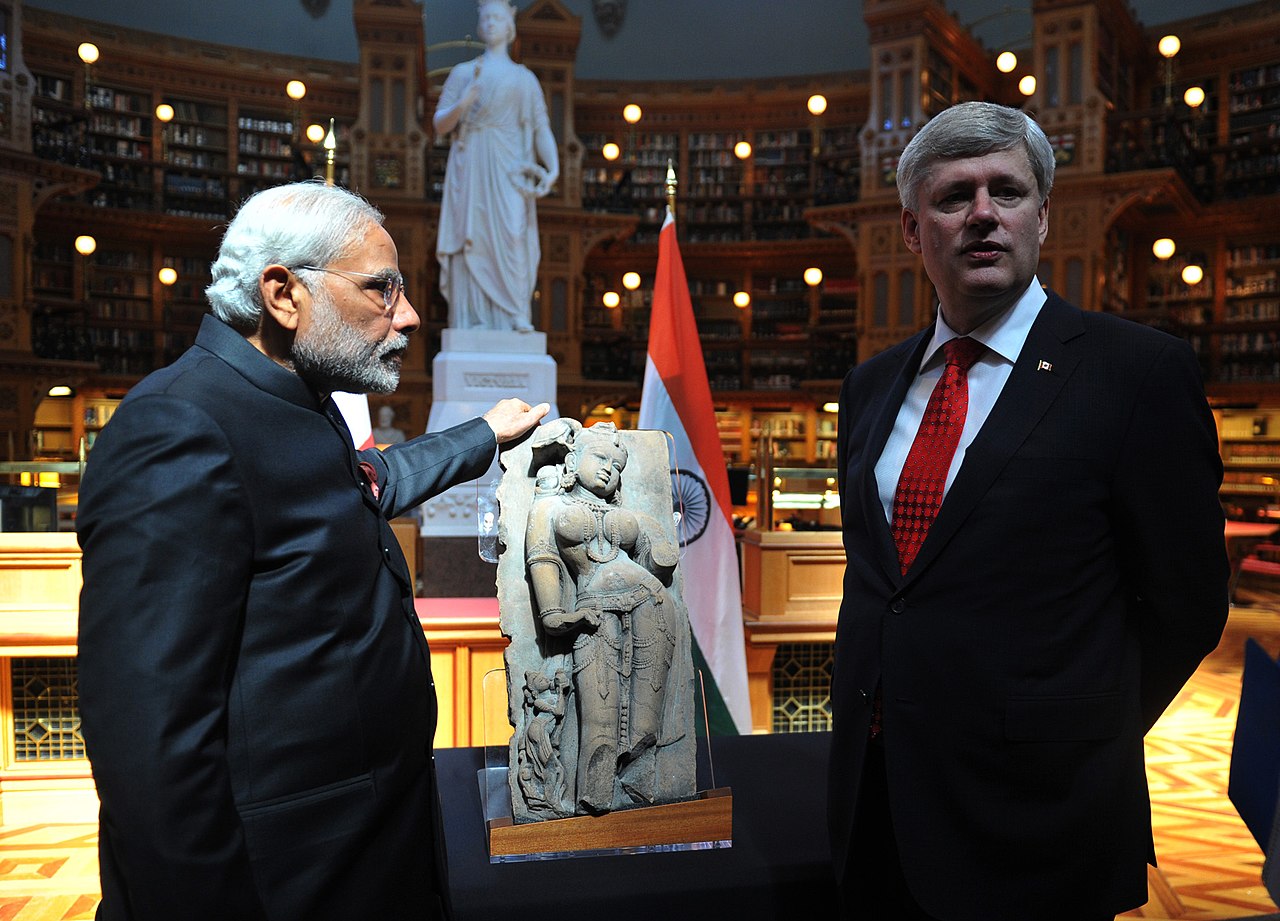 The Prime Minister, Shri Narendra Modi at the presentation of the Parrot Lady statue, in the library of Canadian Parliament with the Prime Minister of Canada, Mr. Stephen Harper, in Ottawa, Canada on April 15, 2015. Licensed under the Government Open Data License - India (GODL)
The Prime Minister, Shri Narendra Modi at the presentation of the Parrot Lady statue, in the library of Canadian Parliament with the Prime Minister of Canada, Mr. Stephen Harper, in Ottawa, Canada on April 15, 2015. Licensed under the Government Open Data License - India (GODL) 

